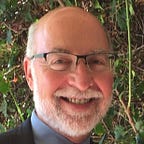Restoring Democracy, One Ballot At A Time
After they were finally declared the winners four days after voting concluded in the recent presidential election, Joe Biden and Kamala Harris graciously gave a shout-out to poll workers.
“To all those who volunteered, worked the polls in the middle of this pandemic, local election officials — you deserve a special thanks from this nation,” Biden declared. The “nation owes you a debt of gratitude,” Harris added.
I won’t deny it. I felt a small flush of pride as they did, because for the first time, the ranks of those election workers included me.
In 2018 my wife and I took a vacation that turned out to be literally life-transforming. It was a driving trip through the Deep South, visiting as many civil-rights sites and locations as we could in Georgia, Alabama, Mississippi, and finishing up in Memphis at the Lorraine Motel where Dr. Martin Luther King, Jr. was assassinated. As much as we thought we already knew about the era, I felt afterward like we had really known nothing.
We visited the simple Montgomery church where Dr. King began his career, and toured the 16th Street Baptist Church in Birmingham where four young girls were blown to pieces by a Klansman’s bomb. Strolling through Kelly Ingram Park across the street, where local police had set their dogs on protesting children, my wife suddenly burst into tears at a statue memorializing the events. Outside Meridian, Mississippi, we placed a stone on the humble gravesite of James Chaney, a 21-year-old local African-American man and voting rights volunteer, murdered by a Klan posse led by a local sheriff’s deputy along with two white Jewish colleagues from New York, Michael Schwerner and Andrew Goodman.
The enormous risks and sacrifice borne by the local African-American activists and organizers — and the courage and idealism of those youthful out-of-state volunteers — still seem beyond inconceivable to me, even now.
While it was hardly my own “Freedom Summer,” it was increasingly clear back in August that vote suppression and voter intimidation would be a centerpiece of the Trump re-election strategy. And when Trump in more recent speeches began calling upon hordes of potentially armed “poll-watchers” to descend on voting places, I knew I had to step up.
As it turned out, volunteering as a Los Angeles County poll worker was probably the most constructive and therapeutic thing I could have done in the waning days of the election. I pretty much stopped my social media doom-scrolling and obsessive news-surfing and focused entirely on the task at hand. It was as elemental as it ever gets in a democracy: mastering a complex set of protocols and contingency scenarios designed exclusively with one simple goal in mind, to ensure that every single person who walked in the door was treated courteously and respectfully and allowed to cast a ballot. And afterward, ensuring that those ballots were scrupulously accounted for and securely transported to the County elections center where they would be validated and accurately tabulated.
If you hadn’t registered, if you were homeless, if you were disabled or needed assistance, if you didn’t speak English, if you refused to wear a mask, if you had been an “inactive” voter who failed to vote in previous elections, if you couldn’t remember whether you’d already voted, even if you lived outside LA County, there were procedures to allow you to vote provisionally — with your eligibility to be verified AFTER you had been given an opportunity to vote. Nobody was turned away at the door.
To a person, my co-workers were kind, patient, and helpful, and completely dedicated to meeting their responsibilities to serve the electorate. After scattered problems with the complex new voting devices in the March primary, the County Registrar-Recorder implemented solutions, and we had no equipment failures during my five-day stint through Election Day. Voters loved the new devices, whose software ensured that they could check and cure any errors before printing and casting their ballots.
To guard against fraud, double and triple-checks verified that all ballots and voting equipment were fully accounted for and kept safely under a trackable chain of custody at all times. Each night, equipment was stored under lock and key, with ballots safely ferried offsite to be securely stored for later tabulation.
Owing to the pandemic, elaborate precautions for sanitizing equipment after each voter, and public health protocols on masking and distancing, were scrupulously observed. Poll workers were on high alert for any improper electioneering, intimidation, and interference of any sort.
Prior to the election, election officials had blitzed every conceivable traditional and new media outlet and platform with information about every aspect of the voting process. Notwithstanding their best efforts, it now appears that while raw numbers are of course higher, the percentage of both voter registrations and voter turnout may be lagging those of 2016. A number of provisional and conditional registration ballots remain to be processed, but all valid ballots will be tallied and included when the final count is certified.
It was an inspiring, empowering, yet humbling experience to play even a bit part in history’s grand quadrennial pageant to keep American democracy alive and functioning. Today we faced nothing like the legal obstacles and deadly perils confronting so many earlier decades of fearless voting-rights advocates, courageous election workers, and determined voters. But I hope that every one of us would agree that we can count ourselves privileged, and honored, to have even a fleeting opportunity to stand in their company.
